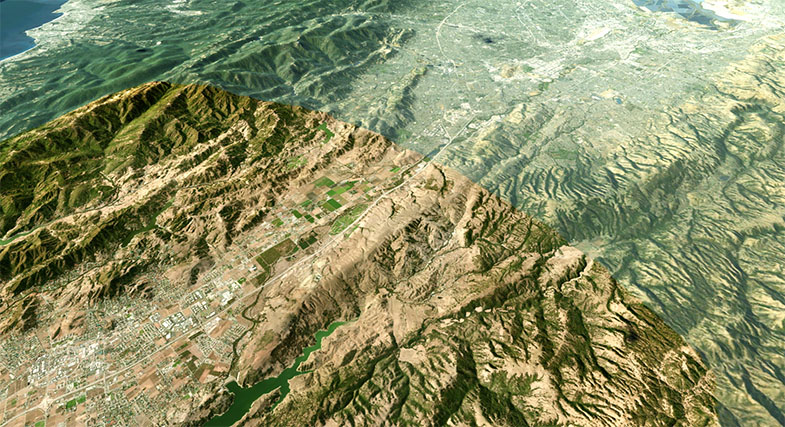Sandworm
The Sandworm tool is used to generate georeferenced terrain of any form using the provided data sources. This tool helps to quickly re-create portions of the real world by projecting them onto a flat Landscape Terrain Object or Object Terrain Global that supports curved mode and natively works with geo-coordinates. The maximum size of the terrain depends on the available memory and data density, but normally it's enough to create a landscape of a big city or a country.
The list of Sandworm features currently includes the following:
- Support for multiple georeferenced sources: raster (elevation, imagery, and masks) and vector (roads, buildings, etc.)
- Advanced data filtering options: via attributes (vector sources), via indexed, color, and channel masks (raster sources)
- Support for online TMS (Mapbox, OSM) and offline data sources
- Mask-based generation of vegetation
- Generation of additional details (sand, rocks, etc.) based on landcover data for more realistic landscape surfaces
- Procedural generation of objects (roads, powerlines, buildings, landmarks, etc.)
- Advanced control and fine-tuning of placement parameters
- Support for most of the widely used Coordinate Reference Systems (CRS) for input as well as output projections
- Ability to combine sources with different projection types within a single project
- Export to Landscape Terrain and Terrain Global
- Coherent and user-friendly interface with dockable windows
Sandworm generates a terrain using height map (elevation) and albedo (imagery) data provided. You can use the following types of data sources:
- Offline — locally stored tilesets: raster (elevation, imagery, and masks) and vector data sources from your local storage device
- Online — Tile Map Services (TMS): you can connect to both open services (such as OpenStreetMap or various state/municipal databases) or private tile servers created and supported by users on the basis of services similar to QGIS (currently supported data from online sources: imagery and elevation).
Geo-referenced imagery and elevation data are processed using GDAL — Geospatial Data Abstraction Library. It supports various raster formats with different map projections for input data. It is also possible to combine different projection types and data sources to generate a terrain.
Sandworm uses GDAL for data processing, therefore, supported formats include those marked Built-in by default in the following lists:
These data sources usually contain a lot of information that can be tagged and filtered using attribute filters.
Tags represent a color (color range) or an attribute value (range of values) and are used to filter the data necessary for generation of certain landcover areas or objects of the cultural layer (roads, buildings). For each tag, you can specify a set of attribute filters to select certain data from the data source. You can specify as many filters as you need for each tag. The tags are used for objects placement on the terrain. For example, by using tags, you can:
- Generate grass or trees for areas marked with certain colors of the landcover texture.
- Generate only highways ignoring small roads using a road type attribute in a vector data file.
- Generate buildings of a certain type only (e.g., apartments, garages, single- or multi-storey buildings, depending on the data stored in the vector data source).
Sandworm supports multiple data layers aligned by geo or raster coordinates: you can easily create high-resolution insets by adding a high-detailed landscape area over a low-detailed one. This can be useful for flight simulators, where high details are required only for areas around airports. The quality of generated terrain is determined by the density of the data sources used.
See Also#
- Article on Landscape Terrain
- Documentation on the GDAL library
- Wikipedia article on Equirectangular projection
